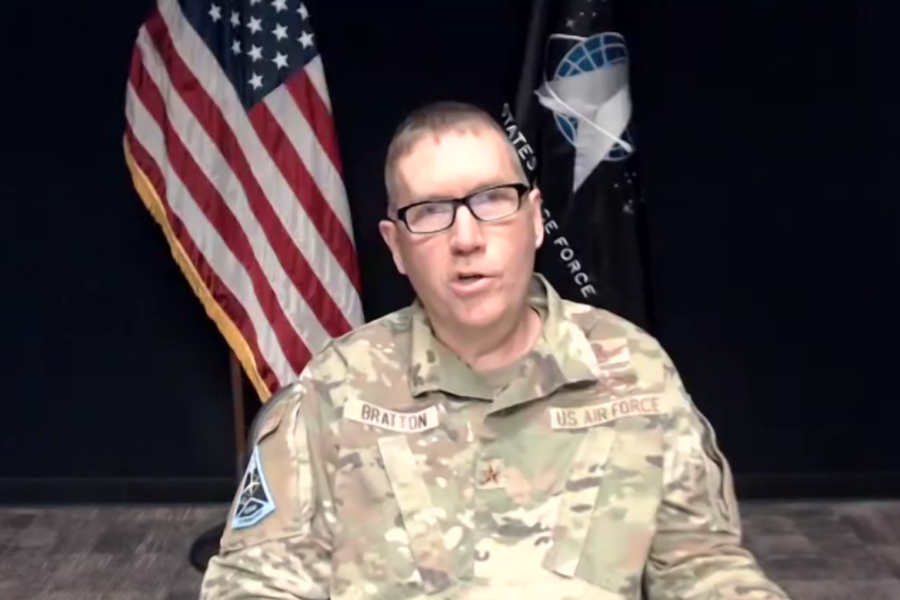The Space Force will debut a new training exercise this year, aimed at improving the service’s command and control capabilities, the head of Space Training and Readiness Command said Jan. 26.
The event, called Polaris Hammer, will happen sometime this fall, Brig. Gen. Shawn N. Bratton said during an AFA Air and Space Warfighters in Action virtual seminar.
“We had a request before STARCOM even stood up to develop a command and control exercise for the Space Force, really geared at the ops center level—so what would be the AOC equivalents, or for us the [Combined Space Operations Center] out of Vandenberg [Space Force Base, Calif.] or the National Space Defense Center here in Colorado Springs,” Bratton said.
STARCOM officially stood up this past August, making it the newest of three field commands under the Space Force. And with only a few months under its belt, the new command has plenty of work to do to develop the training doctrines and exercises that will shape the new service branch, Bratton said.
“We’ll have our first go here in [2022], and see how that goes and if we’re meeting the training objectives,” Bratton said of Polaris Hammer. “And then, of course, we continue to support the combatant command tier one exercises, getting after that. But … we need to develop a little more of that on the service side, and from my seat, really … tease out the doctrine we need to gain and maintain space superiority.”
That won’t be the only exercise that STARCOM organizes in 2022, though. Bratton said the command is set to host an “initial planning conference” in the coming weeks for an exercise called Black Skies, intended to be a more focused version of the Space Flag exercise.
“We do an exercise today called Space Flag that is probably most akin to Red Flag, but it’s sort of got everything in it, and it tries to be everything to everybody,” Bratton said. “I think we’ll break that out into pieces over time, starting with [electronic warfare.]”
That’s not to say the Space Force won’t continue to run Space Flag exercises, Bratton added, but they hope to develop more specific exercises “modeled” after the Air Force’s Flag exercises.
“I think there’s nothing too creative going on here, but we replaced ‘Flag’ with ‘Sky,’ and I see the Space Force going down that road of Black Skies, Blue Skies, Red Skies exercises to get after the needs of those specific training audiences,” said Bratton.
The Air Force uses Red Flag exercises for aerial combat training, Black Flag exercises as a way to test large weapons and capabilities, and Blue Flag exercises to train participants at the operational level. It also hosts Silver Flag exercises, in which civil engineers practice operating in a contingency environment, and Green Flag, a pre-deployment exercise for Air Combat Command flying units to practice close-air support and precision-guided munitions delivery.
And just as the Space Force is looking to refine its command and control operational capabilities, the Air Force will likely look to refine its own Blue Flag exercises, said Maj. Gen. Case A. Cunningham, commander of the USAF Air Warfare Center.
“Recently, I’m sure many of you saw the news release on the lead wings that came from Air Combat Command,” Case said. “And as we look at what it means to be a lead wing in an Agile Combat Employment environment, at wing-level C2 and distributed C2 in the contested environment, the 505th [Command and Control Wing] is also supporting those efforts to more fully develop what those kind of war games will look like to support Agile Combat Employment and make sure we’re rapidly iterating the capabilities there as we continue to get at that.”
